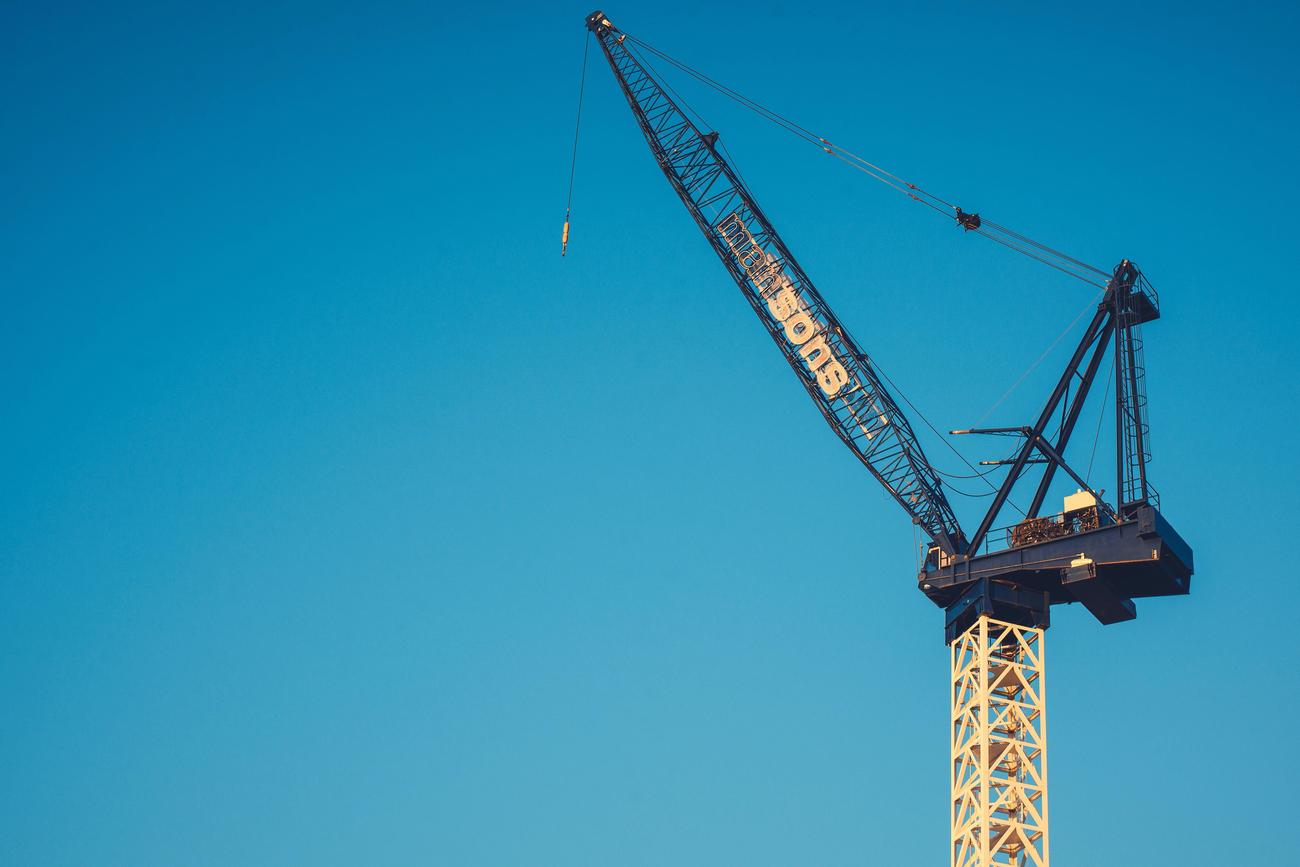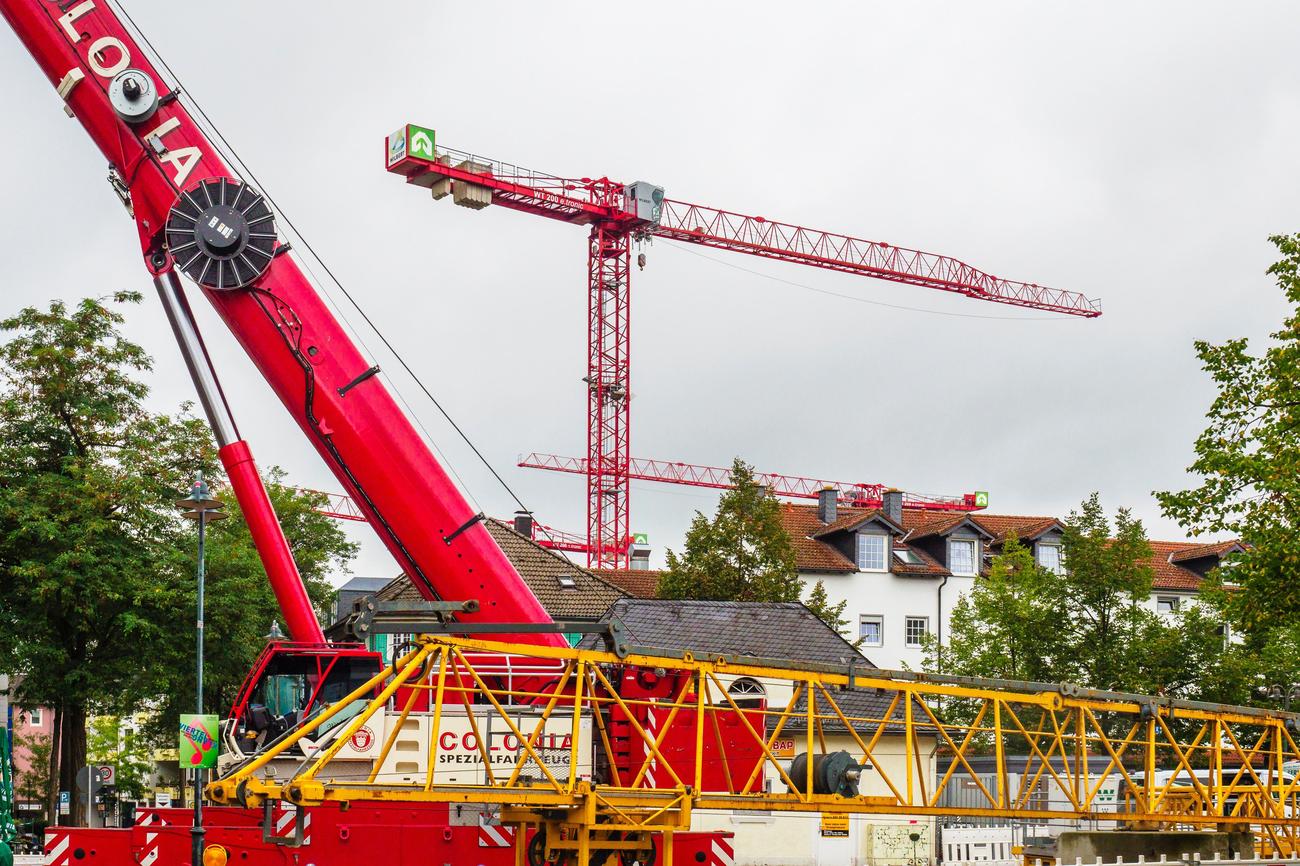What are some words to describe the crucial role that cranes play in the construction industry? Powerful, versatile, and indispensable instantly come to mind. These towering machines, with their ability to move heavy loads and reach dazzling heights, have revolutionized the field of construction. In the article titled The Significance and Impact of Cranes in Construction: Insights and Advancements, we delve into the world of cranes, exploring their importance and impact on the industry. As an experienced civil engineer specializing in construction machinery, I will provide valuable insights and expertise on the efficient utilization and safety measures associated with these remarkable machines. Join me as we uncover the captivating world of cranes and discover the latest advancements that drive progress in the construction sector.

What are few words about cranes
As an experienced civil engineer with a specialization in construction machinery, I have had the privilege of working with cranes for over a decade. Cranes are not just simple machines; they are powerful tools that play a critical role in the construction industry. Let’s delve into the world of cranes and explore their significance and impact in construction, shedding light on the insightful advancements that have revolutionized this field.
When we think of cranes, we envision towering structures on construction sites, diligently lifting and lowering heavy loads. These magnificent machines come in various types, each with its own capabilities and specialties. From crawler cranes that crawl on tracks to truck cranes that can be driven on public roads, and from powerful tower cranes that can reach incredible heights to overhead cranes that smoothly traverse factory floors – the versatility of cranes is remarkable.
Cranes are not just solitary giants on construction sites; they work in harmony with other machinery and equipment. Their ability to move horizontally on rubber tires or crawler treads makes them agile and adaptable. With their rotating structures and hoist mechanisms, cranes can efficiently lift and lower heavy loads, making them indispensable in the world of construction. The boom, a key part of a crane, can be telescopic or fixed, adding to the flexibility and reach of these machines.
In order to ensure safe operations, communication is paramount. Cranes rely on signals and specific signs that need to be posted at job sites. These signals facilitate coordination between crane operators and ground personnel, ensuring smooth and secure movement of loads. Safety protocols and industry best practices play a crucial role in crane operations, underscoring the importance of expertise and experience in the field. It is the responsibility of every professional involved to uphold the highest standards to prevent accidents and promote the well-being of all involved.
Looking beyond the construction industry, cranes can also be found in various habitats and have different diets. The Gruidae family boasts 15 different species of cranes, which resemble herons in appearance. These elegant creatures grace the skies and wetlands, adding to the natural beauty of our world.
In conclusion, cranes are more than just massive machines at construction sites. They are the lifeline of modern construction, capable of moving mountains of materials and shaping landscapes. Their significance and impact in the field are immeasurable. From their ability to lift heavy loads with ease to their intricate communication systems, cranes are a testament to human ingenuity and technological advancements. By staying up to date with the latest innovations and prioritizing safety, we can continue to harness the power of cranes and make our construction endeavors safer and more efficient.
“Cranes are not just machines; they are the mighty giants that drive progress and shape our world.”
Cranes are not just majestic birds; they are also fascinating creatures with some truly remarkable facts. Did you know that cranes have been known to dance? Yes, you read that right! These elegant birds perform elaborate dances during courtship rituals that are simply captivating to witness. If you want to learn more fun facts about cranes, click here: fun facts about cranes. Prepare to be amazed by the incredible world of cranes, where dance and grace meet in perfect harmony.
10 Interesting Facts About Cranes
[youtube v=”a3N06XHFp7I”]
Introduction
Cranes, although often associated with the construction industry, are also fascinating creatures found in nature. In this article, we will explore 10 intriguing facts about cranes and highlight their significance in both construction and the natural world.
Fact #1: The Tallest Flying Bird in the World
The crane holds the impressive title of being the world’s tallest flying bird. With their long legs, necks, and bills, these graceful creatures command attention wherever they go.
“The crane is truly a remarkable bird, standing tall and distinct as the tallest flying species.”
Fact #2: Diverse Colors
Cranes come in a variety of colors, including brown, gray, and white. Their subdued hues allow them to blend seamlessly into their natural surroundings.
Fact #3: Widespread Distribution
Found across the globe, cranes have established their presence in numerous regions. Their adaptability enables them to thrive in diverse environments.
Fact #4: Omnivorous Diet
Cranes are omnivorous birds, feasting on a wide range of food. Their diet includes both plant matter and various small creatures, allowing them to maintain a balanced and versatile eating habit.
Fact #5: Resemblance to Herons and Egrets
In terms of body shape, cranes bear a resemblance to herons and egrets. This similarity can be observed in their long legs and elegant postures, adding to their captivating beauty.
“The crane’s resemblance to herons and egrets showcases the elegance nature expresses through various avian species.”
Fact #6: Ability to Swim
Contrary to popular belief, cranes are not just excellent fliers but also capable swimmers. They demonstrate agility in calm waters, effortlessly gliding along the surface.
Fact #7: Flocks of Cranes
A group of cranes is referred to as a “flock.” These social birds often gather in large numbers, strengthening their sense of community and enhancing their collective security.
Fact #8: Diverse Crane Species
There are an impressive 15 species of cranes, each with its own distinctive characteristics and habitats. This diversity showcases the adaptability of this incredible bird family.
Fact #9: Long Lifespan
Cranes have relatively long lifespans, with an average range of 20 to 50 years. Their ability to thrive and survive for extended periods highlights their resilience in the natural world.
“The crane’s longevity speaks to its ability to navigate the challenges of its environment, making it a symbol of endurance and strength.”
Fact #10: Importance in Construction
Apart from their natural existence, cranes also play a vital role in the construction industry. These powerful machines contribute significantly to modern construction projects, allowing heavy loads to be lifted and landscapes to be shaped effectively.
“Cranes are indispensable in construction, revolutionizing the way we build and shape our urban landscapes.”
Conclusion
From their majestic presence in nature to their virtuosity in construction, cranes captivate our attention in various realms. Understanding their significance and embracing their impact on both natural and human-made environments enhances our appreciation for these remarkable creatures.

FAQ
Question 1
What are the different types of cranes used in construction projects?
Answer 1
Cranes used in construction projects can include crawler cranes, truck cranes, tower cranes, overhead cranes, and gantries. Each type has its own specific capabilities and is utilized based on the requirements of the project.
Question 2
What is the role of cranes in the construction sector?
Answer 2
Cranes play a crucial role in the construction sector as they are capable of lifting and lowering heavy loads. They are used to move materials, equipment, and components to different heights and locations on construction sites, enabling the efficient completion of various tasks.
Question 3
How do cranes communicate on the job site?
Answer 3
Cranes communicate through signals to ensure safe and coordinated operations. Specific signals need to be posted and understood by the crane operators, signaling different actions such as lifting, lowering, swinging, and stopping. These signals help maintain a safe working environment and prevent accidents.
Question 4
What are the key components of a crane?
Answer 4
The main components of a crane include the boom, the hoist mechanism, and the rotating structure. The boom can be telescopic or fixed and is responsible for lifting and lowering loads. The hoist mechanism is used to control the movement of the load, while the rotating structure allows the crane to move horizontally on rubber tires or crawler treads.
Question 5
How do cranes contribute to safety in construction?
Answer 5
Cranes play a vital role in ensuring safety at construction sites. With their ability to lift heavy loads, they minimize the need for manual labor and reduce the risk of injuries. Additionally, cranes are subject to stringent safety protocols and industry best practices, which aim to prevent accidents and maintain a safe working environment.
- Mastering Leader in Spanish: The Complete Guide - April 19, 2025
- Uncovering Surprising Parallels: England Size Compared to US States - April 19, 2025
- Old Mexico Map: Border Shifts 1821-1857 - April 19, 2025
















